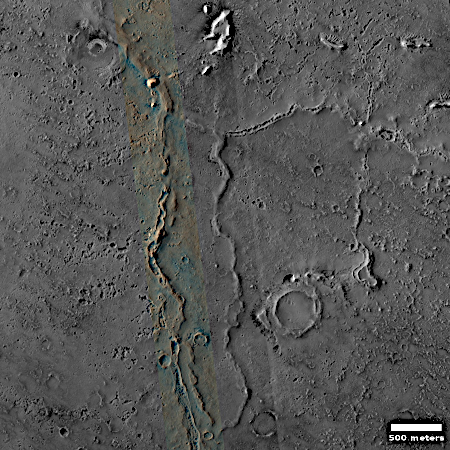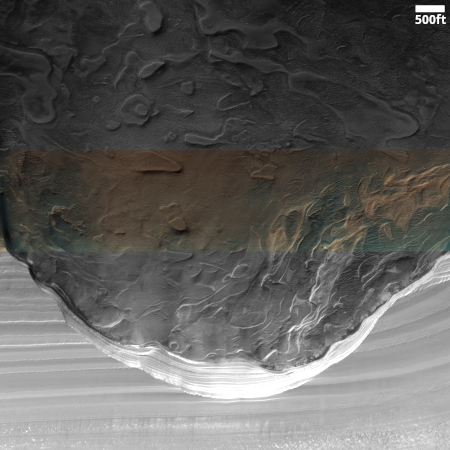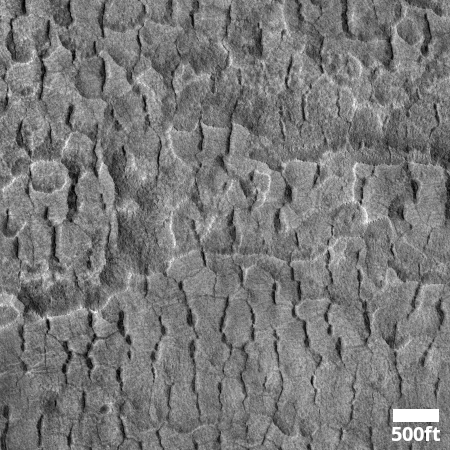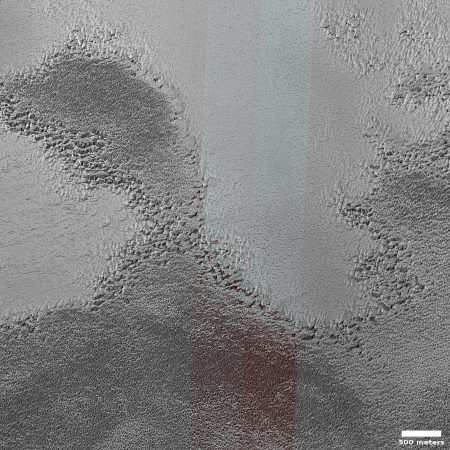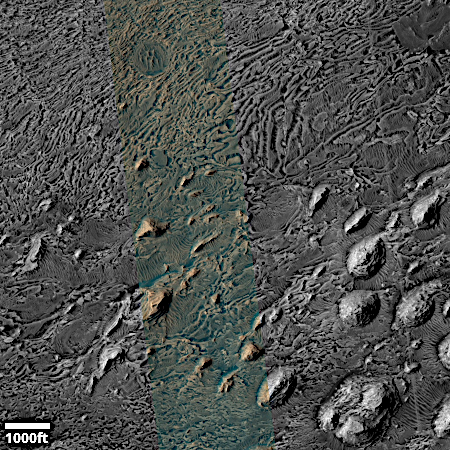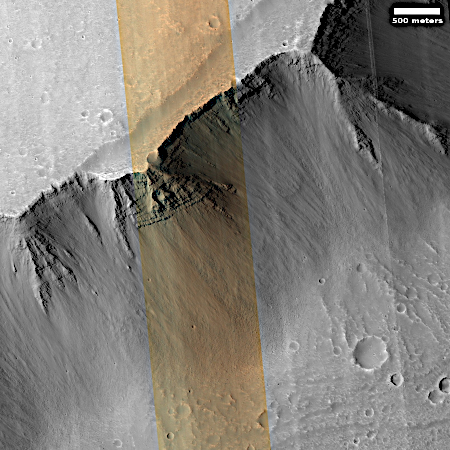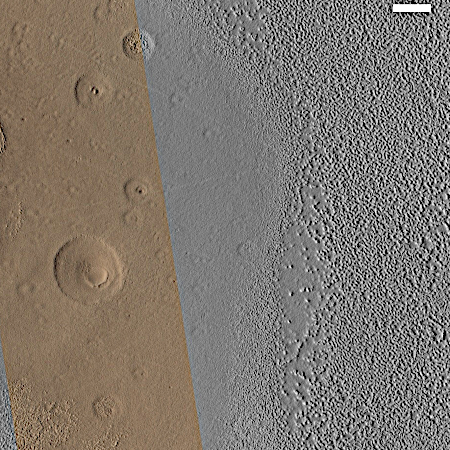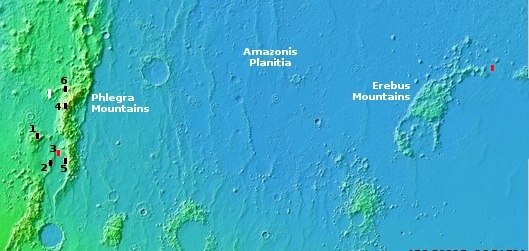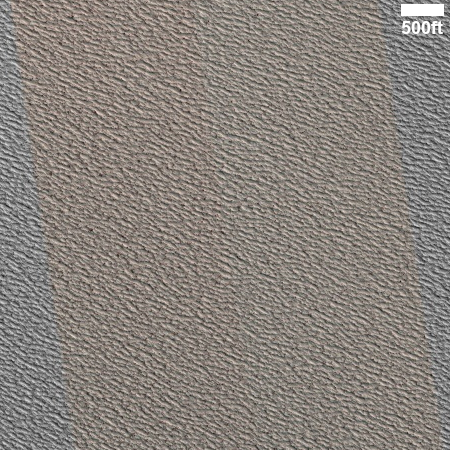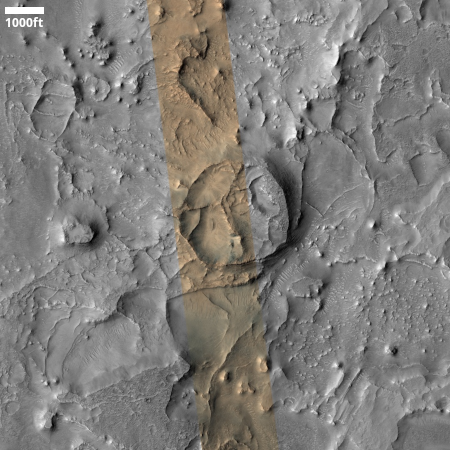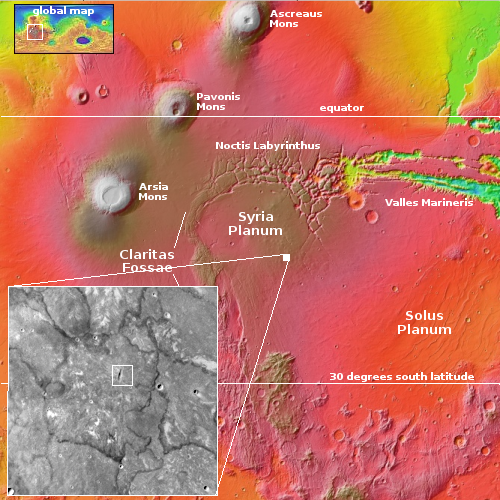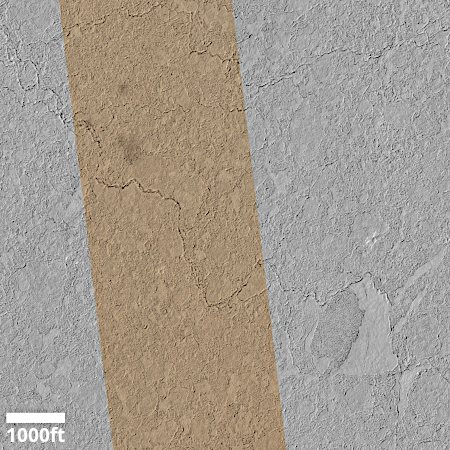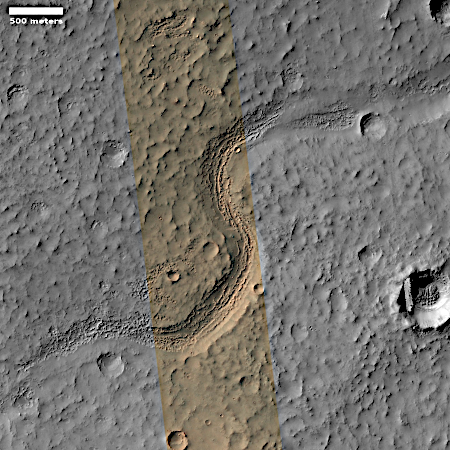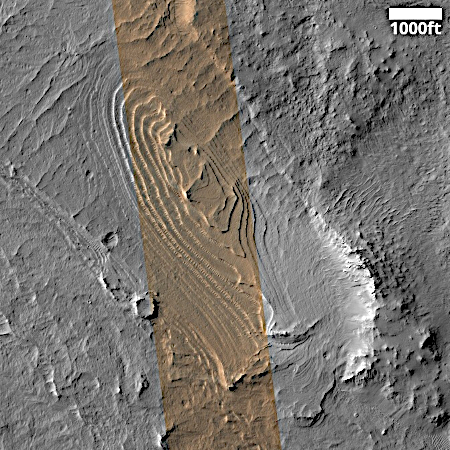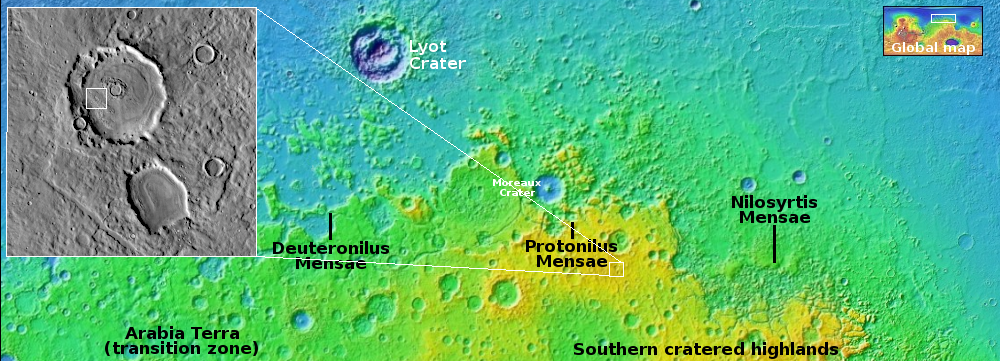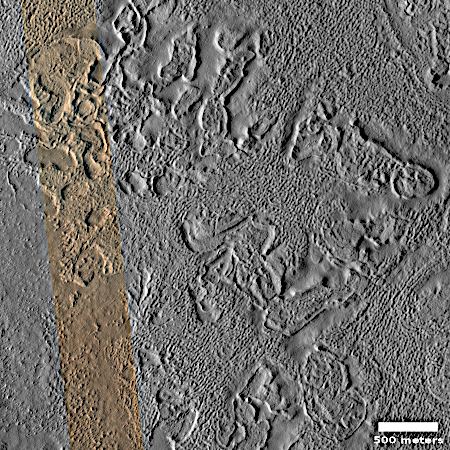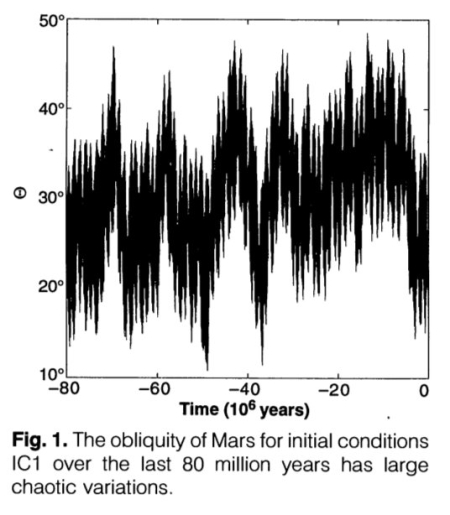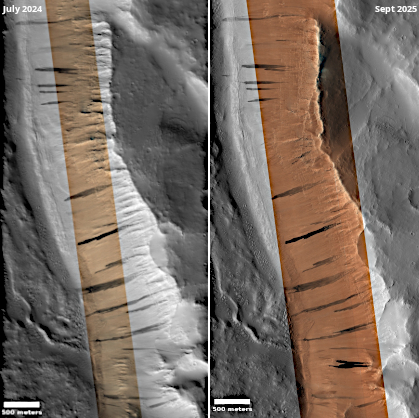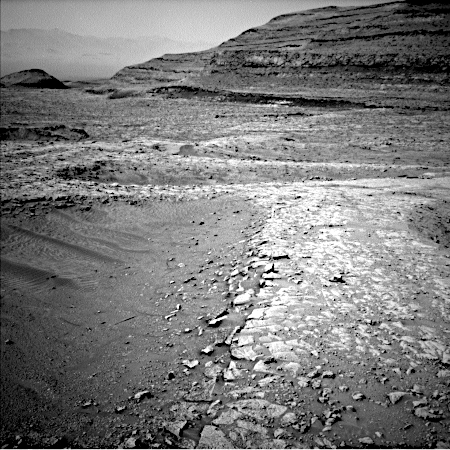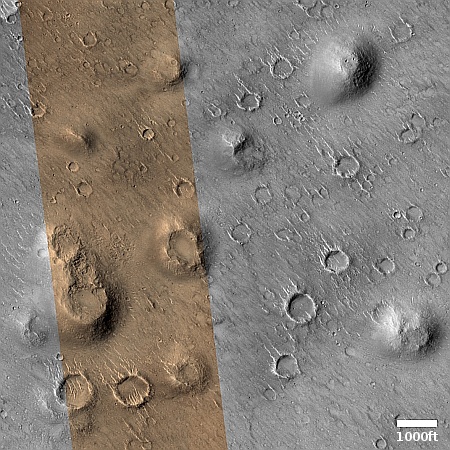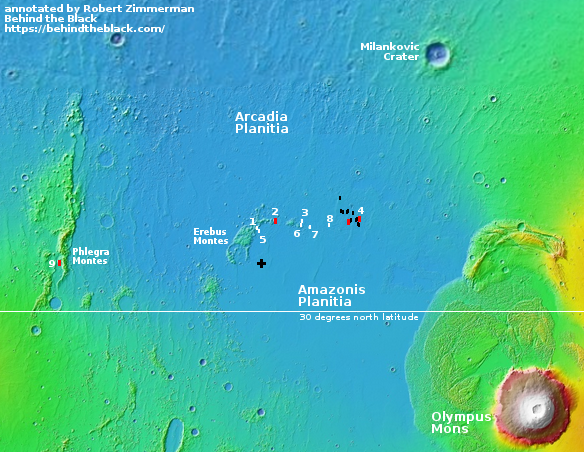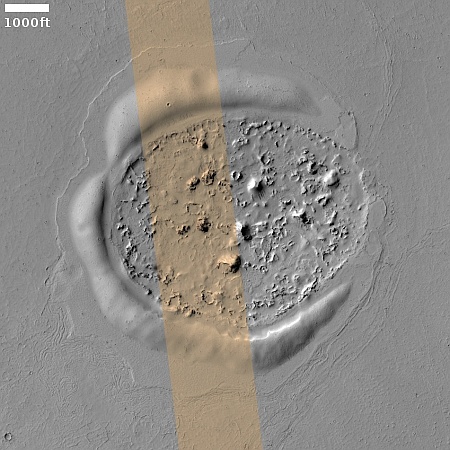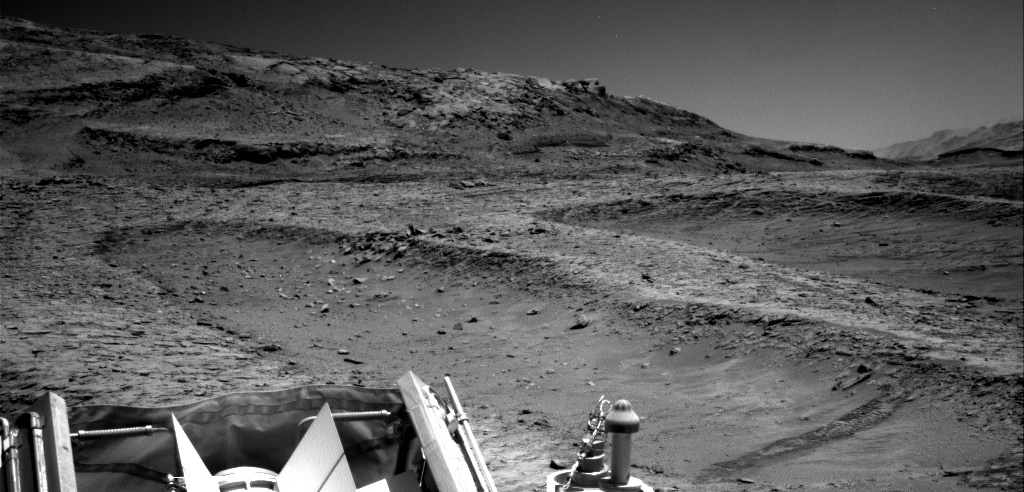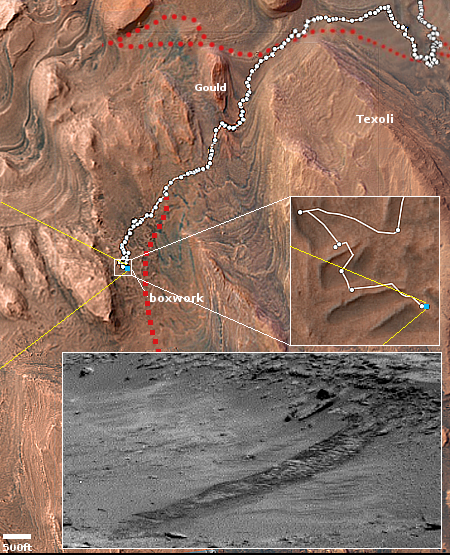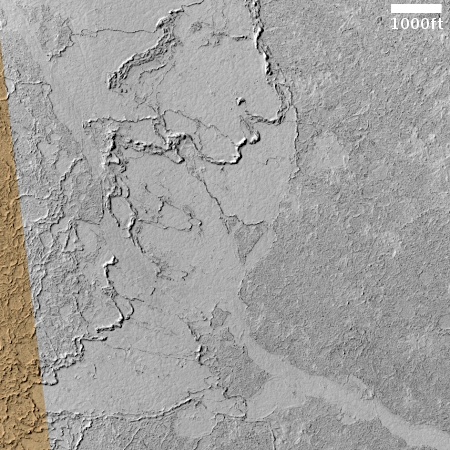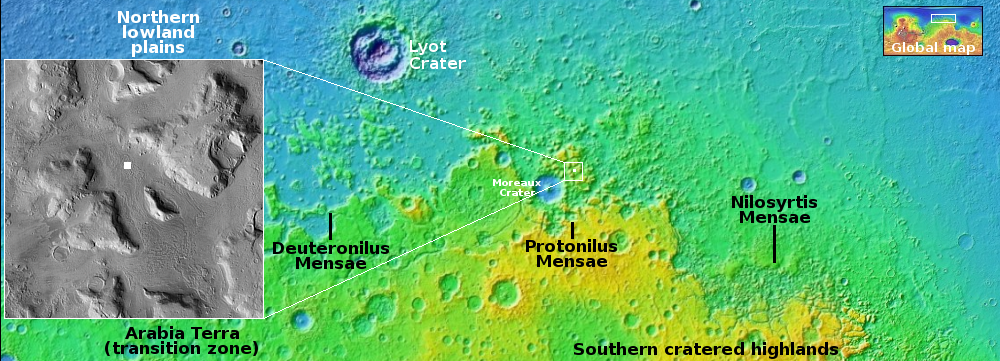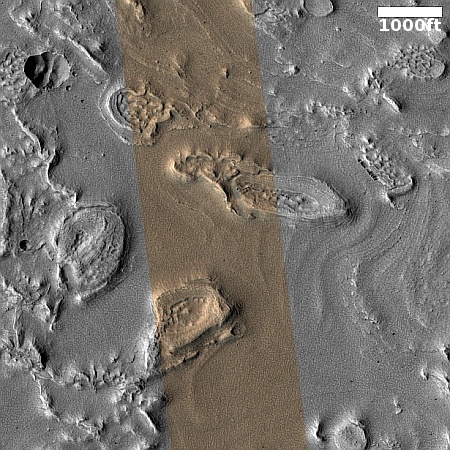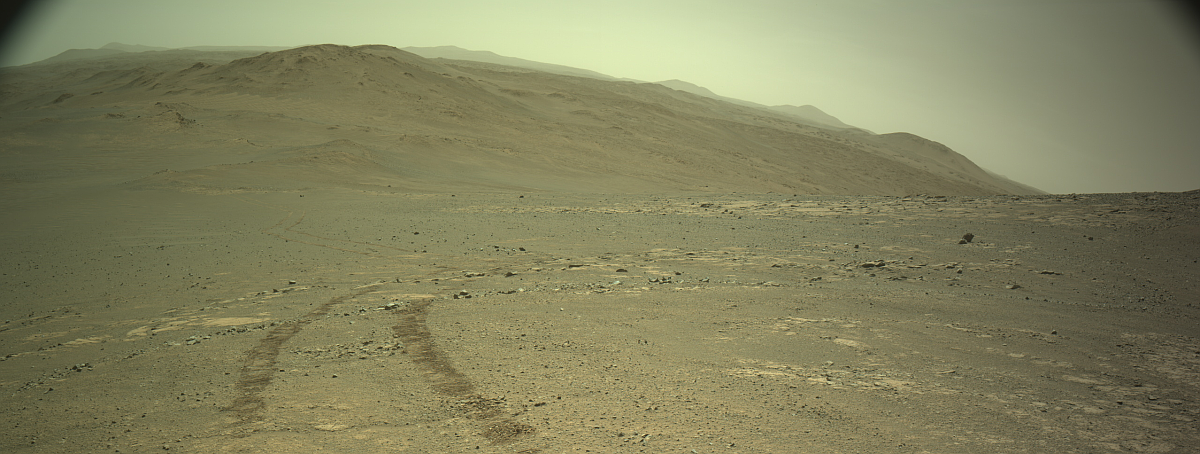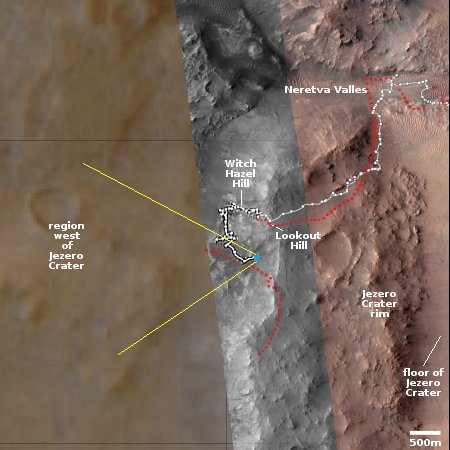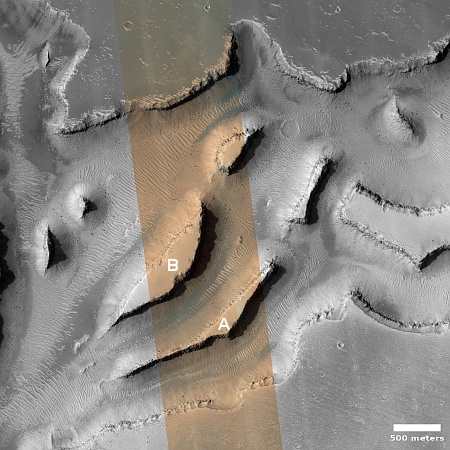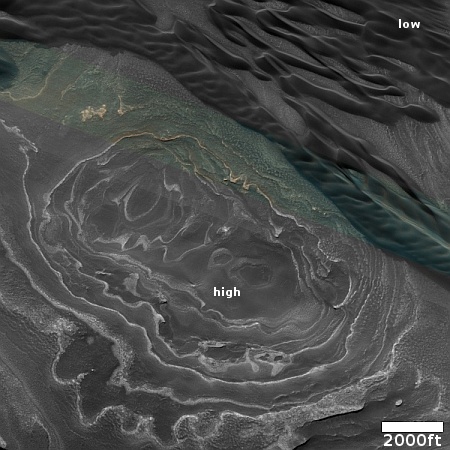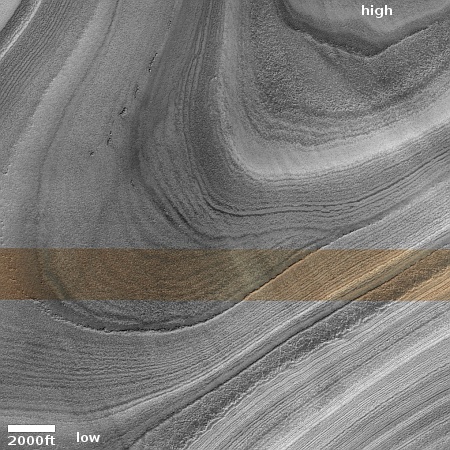Cracks on Mars
Cool image time! The picture to the right, cropped, reduced, and sharpened to post here, was taken on September 20, 2025 by the high resolution camera on Mars Reconnaissance Orbiter (MRO).
The camera team describes these features as “ridges,” which in one sense is entirely true. The features are ridges that rise above the surrounding plain. The problem is that they are also cracks, with most showing a distinct central fissure in their middle.
Such double ridged cracks are reminiscent of the surface of dried mud or paint, when it begins to crack and shrink. The surface on each side of a crack pulls away, rising upward slightly as it does so. Is that what we are seeing here, the drying of this surface?
As always, location is critical to understanding the Martian geology.
» Read more
Cool image time! The picture to the right, cropped, reduced, and sharpened to post here, was taken on September 20, 2025 by the high resolution camera on Mars Reconnaissance Orbiter (MRO).
The camera team describes these features as “ridges,” which in one sense is entirely true. The features are ridges that rise above the surrounding plain. The problem is that they are also cracks, with most showing a distinct central fissure in their middle.
Such double ridged cracks are reminiscent of the surface of dried mud or paint, when it begins to crack and shrink. The surface on each side of a crack pulls away, rising upward slightly as it does so. Is that what we are seeing here, the drying of this surface?
As always, location is critical to understanding the Martian geology.
» Read more

